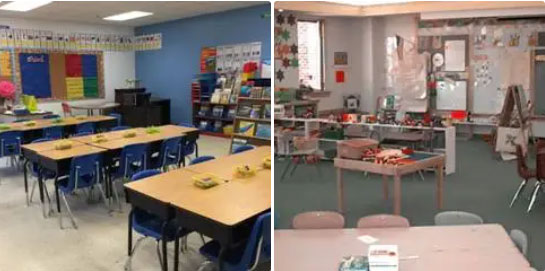Setting up a classroom to foster literacy development and engagement is a critical part of literacy instruction. A teacher′s belief system and philosophy can be translated into both the physical structure of her classroom and the content communicated on the walls. These attributes come together to create a teacher’s vision of their classroom. As you prepare for this year’s teaching, consider some of the important components of your classroom environment and structure that support your literacy instruction.

Using the attached document entitled, Checklist to Set Up My Literacy Classroom, visualize your classroom and consider how you will incorporate the five component areas into your classroom design. Consider how each component is a powerful tool to support your goals for your students. Remember, research supports that the design, physical arrangement and organization of an effective literacy classroom can be a powerful tool in support of, or an unintended impediment to, effective literacy instruction (Morrow, Reutzel, & Casey, 2006; Reutzel, Jones, & Newman, 2010; Reutzel & Morrow, 2007; Wolfersberger, Reutzel, Sudweeks, & Fawson, 2004).
Each of these five component areas are briefly described below. Blogs for each area will follow through the month of August. Reflective questions will support the development of an internal conversation about the strengths and possible needs of your classroom environment and use of physical space.
- Classroom Culture and Environment
Movement to support the Gradual Release of Responsibility supports the overall goal of transferring the ownership for literacy learning to your students. This can be a challenge for many teachers, as we have to work within the room we are given and use the furnishing provided. In some situations, a great deal of planning, as well as trial and error, is necessary in order to foster the movement and flow you are seeking. - The Classroom Library Structure and Organization
The classroom library is the heart of the Balanced Literacy Classroom, because it is where students choose texts on their own to read for pleasure, practice, and growth. Developing a strong library takes years, but there are ways to arrange your library that can motivate and engage students to read a wide variety of texts. - Rituals, Routines and Responsibilities
Rituals, Routines and Responsibilities are the agreed upon expectations of the Balanced Literacy Classroom. Teachers meet with students early in the year to establish both teacher and student expectations for each aspect of the Gradual Release of literacy instruction. These are posted and referred to often, becoming the framework for behavior in the classroom. - Independent Reading
Students need daily reading of self-selected books at the student’s independent through instructional level that meet their interest, purpose for reading, and provide opportunities to stretch and hone their reading skills and strategies. This daily practice develops wise readers who are self-motivated, self-directed, and engaged readers. It also cultivates critical thinkers, problem solvers, and meaning makers who LOVE to read and choose to read! How do students become wise readers? They READ. They read a lot, every day, books they choose and want to read, as well as texts provided by teachers and parents. - Conferring
How can we know our students as readers? The BEST way to know a reader is to LISTEN to them read and TALK to them about what they read, while observing and making anecdotal notes or collecting specific DATA about who they are and where they are as a reader. We have to spend time listening to them read to know if they are choosing books that are accessible and understandable, as well as challenging enough to provide opportunities to practice skills and strategies while developing their vocabulary and background knowledge.
Use the attached Checklist to Set Up My Literacy Classroom resource as you prepare your classroom for your students this fall. Have a great start to a fabulous year!
RESOURCE
This article is #1 in the twelve-part series, “Getting My Classroom Ready for Balanced Literacy Instruction: Classroom Culture and Environment.”